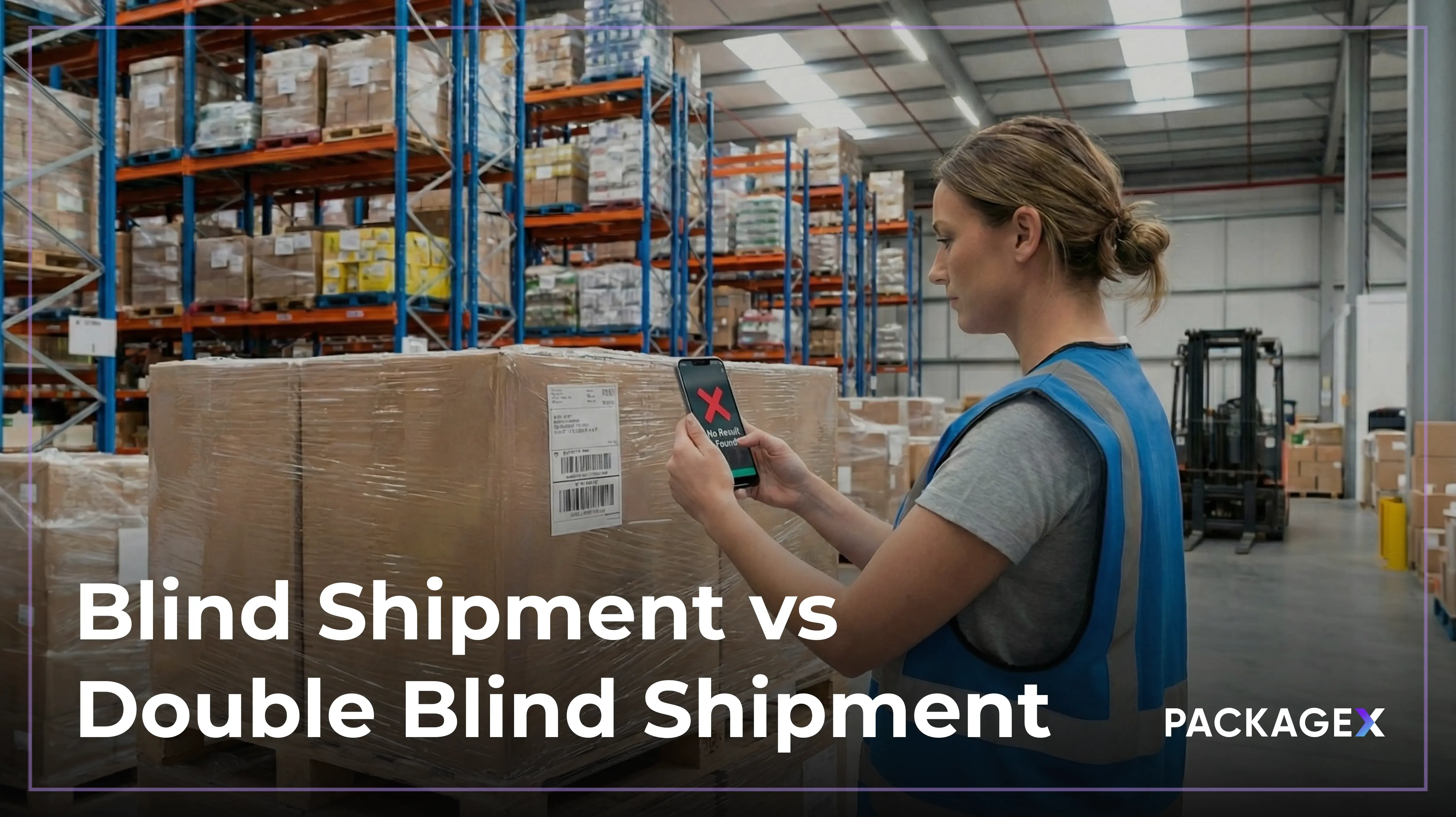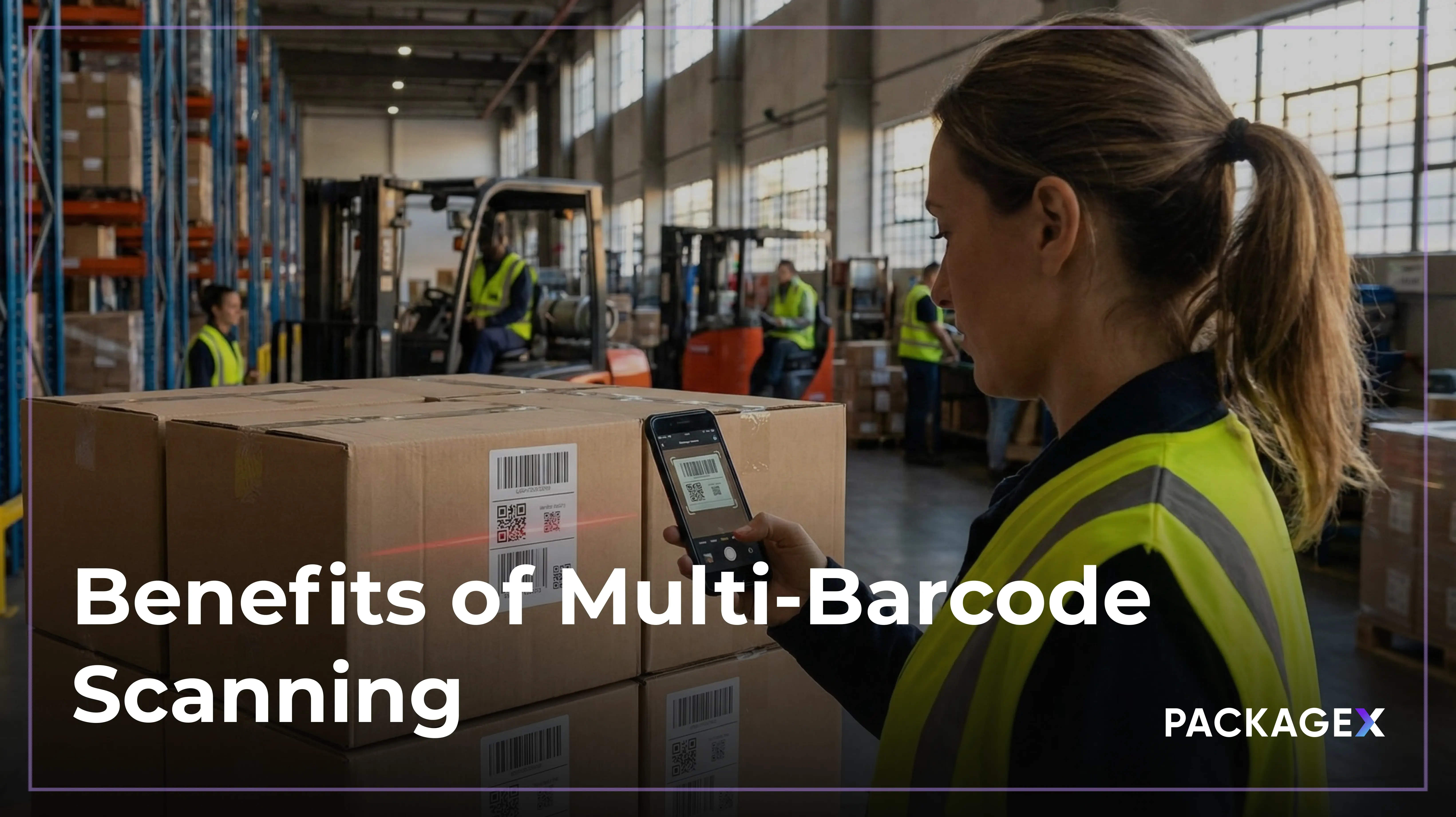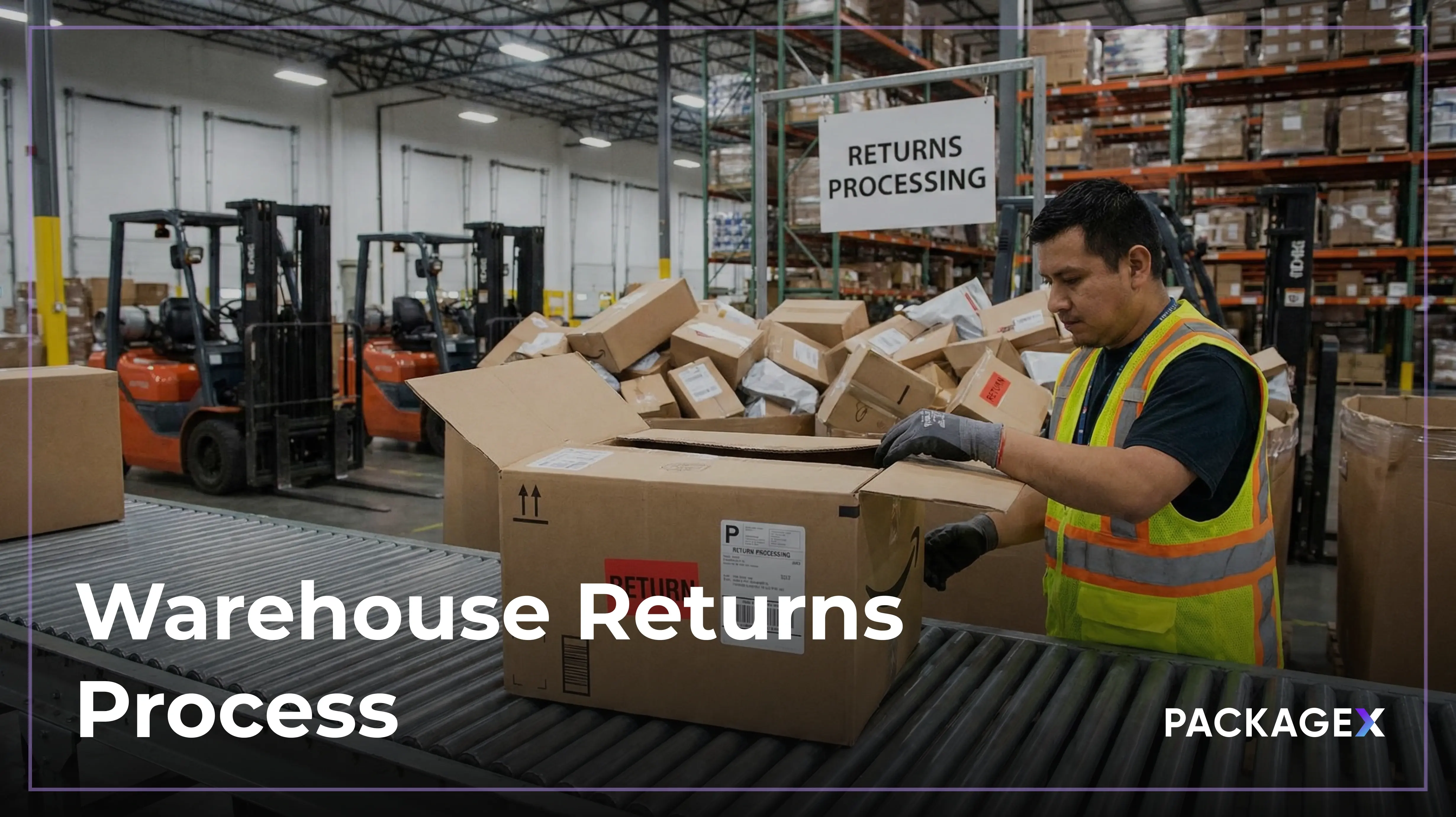Inbound logistics plays a crucial role in ensuring your supply chain operates smoothly. When supplies arrive on time and in the proper condition, your operations stay on track, and costs stay under control.
The inbound logistics market has grown strongly in recent years. It is expected to climb to $2,438.02 billion by 2029, maintaining strong momentum with a CAGR of 8.8%.
These stats reflect how businesses are placing greater focus on improving the way they receive and manage goods.
In this blog, you will learn about the common challenges in inbound logistics and practical ways to improve efficiency, reduce costs, and strengthen your overall supply chain.
What is Inbound Logistics?
Inbound logistics is the process of managing how goods, materials, and related information move from suppliers into a business. It covers everything from sourcing and purchasing to transportation, receiving, storage, and distribution within a company’s facilities.
This function plays a crucial role in ensuring that the right materials arrive in the correct condition at the right time to support production or resale. By focusing on the supply side of operations, inbound logistics helps businesses maintain efficiency, reduce costs, and ensure continuity in their day-to-day activities.
In contrast, outbound logistics refers to shipping finished goods to customers or other businesses.
Key Aspects of Inbound Logistics
Inbound logistics involves several key activities that help ensure the smooth and efficient flow of goods into an organization:
- Supply chain management
- Inventory management
- Reverse Logistics
- Stock procurement
- Transportation planning
- Receiving and unloading
- Unit load selection
- Product labeling and consolidation
- Storage optimization
Managing these aspects carefully helps maintain optimal stock levels and prevents production delays that could lead to missed sales opportunities.
Inbound Logistics KPIs
To measure success in logistics, here are the most critical KPIs to track:
- Transportation cost: The total cost of transporting goods to the business.
- Freight bill accuracy: The accuracy of freight invoices in matching actual transportation costs.
- Loading and unloading times: The time taken to load or unload goods during inbound logistics.
- On-time delivery rate: The percentage of orders delivered on time by suppliers.
- Average lead time: The time taken between placing an order and receiving the inbound shipment.
- Damaged goods rate: The percentage of orders that arrive damaged.
- Overhead cost: The operational costs of inbound logistics management.
- Returns processing efficiency: The processing and resolution speed of returned products.
How Inbound Logistics Adds Value?
Here’s how a well-managed inbound logistics system directly improves business performance:
- Cost Reduction
- Smarter Transportation Choices: Selecting the most efficient carriers and routes helps reduce freight and fuel costs.
- Stronger Supplier Terms: Building long-term partnerships often leads to better pricing and payment flexibility.
- Inventory Efficiency: Better control over inbound goods lowers holding costs and cuts down on excess or obsolete inventory.
- Greater Visibility Across the Supply Chain
- Real-Time Insights: Tracking shipments as they move through the supply chain operations, gives teams the visibility needed to plan proactively.
- Fewer Surprises: Reliable delivery forecasts help prevent last-minute disruptions that could impact production or sales.
- Improved Operational Efficiency
- Faster Receiving & Handling: Streamlined processes for unloading, inspection, and storage speed up the inbound flow.
- Shorter Lead Times: When goods arrive on time, and as expected, production can stay on schedule without costly delays.
- Higher Customer Satisfaction
- Consistent Product Availability: Reliable inbound supply means customers get what they need when they need it.
- Stronger Product Quality: Managing the quality of incoming materials ensures the final product meets expectations.
- Stronger Market Competitiveness
- Agility and Responsiveness: An optimized inbound process lets businesses pivot quickly in response to shifting demand or supply conditions.
- Strategic Advantage: Over time, companies with better inbound systems often report up to 20–30% faster order fulfillment and improved margins.
Challenges of Inbound Logistics
Inbound logistics can add significant value to your operations, but only when managed effectively. Many businesses still struggle with issues that lead to inefficiencies. Here are some of the most common hurdles:
- Limited Visibility:
Many companies still rely on outdated systems that don’t offer real-time tracking of shipments or inventory. Without clear insights into where goods are and when they’ll arrive, it becomes difficult to forecast demand or keep carrying costs in check. - Unreliable Supplier Performance:
Delays in shipments, inconsistent product quality, or incomplete deliveries can throw off the entire supply chain. Factors such as labor shortages, equipment failures, or weather-related disruptions further exacerbate the unpredictability. - Complex Compliance Requirements:
For companies sourcing materials internationally, navigating customs regulations, import documentation, and regional trade laws can be a constant challenge. Any misstep can result in delays, fines, or even shipment rejections. - Rising Operational Costs:
Without optimization, inbound logistics can become one of the most expensive aspects of your supply chain. Fluctuating fuel prices, underutilized transport capacity, and idle time at loading docks all contribute to mounting costs. - Inefficient Returns Handling:
Returns are often an overlooked part of inbound logistics. Poor coordination during reverse logistics can lead to inventory miscounts, longer processing times, and dissatisfied customers, all of which affect efficiency and impact margins.
How to Improve Inbound Logistics: 5 Strategies to Succeed
Let’s explore the strategies you can implement to have more streamlined operations that are faster, more efficient, cost-effective, and flexible.
Partner and Supplier Relationship Management
Strong supplier relationships are at the heart of successful inbound logistics strategies. Here's how to build and maintain them:
- Communicate consistently and clearly: Keep suppliers informed and aligned with your business goals.
- Pay invoices on time: It shows reliability and strengthens long-term partnerships.
- Stick with trusted suppliers: Working with fewer, reliable vendors reduces contract hassle and onboarding time.
- Establish Vendor Inbound Compliance Standards (VICS): These set clear expectations for delivery timelines, product quality, and penalties for non-compliance.
- Negotiate smarter: Ask for extended payment terms or volume discounts to save costs.
- Use a Third-Party Logistics Provider (3PL): Outsourcing to a 3PL can optimize inbound logistics by streamlining shipments and reducing internal workload.
Take Apple, for example. Its top 200 suppliers handle 98% of its materials, production, and assembly. Apple’s strict standards and focus on innovation demonstrate how effective supplier control contributes to operational success, particularly when combined with cutting-edge tools like inbound logistics software solutions.
Technology and Automation
Technology plays a key role in building an efficient inbound logistics system. It improves visibility, reduces errors, and keeps operations on track.
- Use a Logistics Management System (LMS): An LMS is essential inbound logistics software. It helps automate the receiving process, manage supplier communication, and keep shipments organized. Reducing manual work improves accuracy and speeds up delivery handling.
- Optimize with Route Planning Tools: Intelligent route optimization software uses GPS, machine learning, and real-time data. It finds the best delivery routes, reduces fuel costs, and improves on-time arrivals. Faster unloading and smoother in-plant operations are added benefits.
- Track and Monitor in Real Time: Using real-time inventory tracking tools, you can monitor inbound fleets, unloading times, and warehouse flow. This helps reduce delays and improve resource planning.
- Add a Transportation Management System (TMS): A TMS is another type of inbound logistics management software. It compares carrier rates, tracks shipments, and collects service data. It’s a powerful tool for managing transportation costs.
- Use Analytics for Smarter Decisions: Inbound logistics systems with built-in analytics help you monitor performance, fix weak spots, and drive continuous improvement.
Cost Management
Managing inbound logistics costs is key to improving operational efficiency and profitability. Here’s how you can control major cost drivers in your supply chain.
- Optimize Freight Transportation: One of the easiest ways to cut logistics costs is to avoid volatile spot rates. Contract freight services offer more predictable pricing and better long-term value.
- Reduce Inventory Holding Costs: Using strategies like just-in-time (JIT) inventory helps minimize storage needs and carrying costs. With consignment models, suppliers retain ownership of inventory until it’s used.
- Cut Labor Expenses: Investing in inbound logistics software can automate repetitive manual tasks, reducing your dependence on large warehouse teams.
- Increase ROI with Smart Tech: An integrated inbound logistics system provides full visibility into your supply chain. It helps you track transportation costs, spot inefficiencies, and improve forecasting accuracy. With better insights and fewer disruptions, businesses can boost overall ROI.
Data and Analytics
Data plays a critical role in optimizing inbound logistics management.
- Set up Systems to Track Essential Data: Set up systems to collect crucial data on costs, shipping, and inventory. This is essential for long-term comparisons and for identifying patterns in your inbound logistics system.
- Review Current Processes for Weaknesses: Once data is collected, review your current processes to spot weaknesses. Benchmark your performance against industry standards to understand where your inbound management needs adjustment.
- Use Inbound Logistics Software to Centralize Data: Using software allows you to centralize all relevant data in one place.
- Drive Continuous Improvement through Insights: These insights can lead to continuous improvements in inbound processes. Over time, this results in increased efficiency, lower operational costs, and stronger supply chain performance.
- Evaluate the Impact of Decisions: Finally, assess the impact of your changes on both costs and efficiency. A data-backed approach ensures smarter logistics.
Inventory and Shipping Optimizations
Efficient inventory management and shipping practices are essential for a smooth inbound logistics system.
- Avoid LTL and Consolidate Shipments: Less-than-truckload (LTL) shipments are often more expensive. Consolidating partial loads with other shipments significantly improves efficiency. Many inbound logistics software platforms now support load consolidation planning to simplify the process.
- Work with a 3PL Provider: Third-party logistics (3PL) providers help manage fulfillment and streamline inbound shipping. By integrating a 3PL with your inbound logistics software can provide better tracking, reduce errors, and cut operational costs.
- Build Reliable Carrier Relationships: When you understand your freight needs, it’s easier to create routing guides and set clear delivery expectations. Businesses using structured inbound logistics management systems often experience fewer delays and better service levels.
- Forecast Demand Accurately: Accurate demand forecasting helps avoid both overstock and backorders. With the help of inbound logistics systems, businesses can almost eliminate stockouts by restocking just in time-based on real usage patterns.
- Use Cross-Docking to Cut Storage Time: Cross-docking moves products directly from inbound trucks to outbound shipping. Many inbound logistics management tools support cross-docking workflows, making it easier to improve distribution speed.
How PackageX Helps You Optimize Inbound Logistics
Managing inbound logistics can be complex, but PackageX makes it easier. Our AI-powered platform helps you streamline receiving, cut costs, and stay in control.
- Automated Receiving: Digitize shipment data with OCR scanning to reduce manual entry and improve inventory accuracy.
- Inventory Visibility: Real-time tracking helps reduce carrying costs, minimize damage, and improve on-time delivery.
- Smarter Planning: Get data insights to plan production, shipping, and inventory levels more efficiently.
- Returns Management: PackageX simplifies returns with connected workflows, helping you recover value and boost customer satisfaction.
From inventory control to operational efficiency, PackageX delivers the tools you need to stay ahead in today’s supply chain.
FAQs
How does inbound logistics differ from outbound logistics?
Inbound logistics focuses on the movement of raw materials, supplies, and goods into a business for production or use. Outbound logistics, on the other hand, deals with distributing finished products to customers or retailers. While inbound is about sourcing and receiving, outbound logistics is about order fulfillment and delivery.
What is an example of inbound logistics?
Some examples of inbound logistics include purchasing materials, receiving inbound shipments, and managing returns (also known as reverse logistics). Essentially, inbound management focuses on the transportation of goods into a company. Making your inbound operations more efficient ensures materials flow smoothly from suppliers to your business.
What is the impact of inbound logistics?
An optimally functioning inbound logistics system can help a business produce high-quality products, significantly reduce costs, and boost sales. It also reduces material waste and keeps production on track with the right resources at the right time.

.avif)


